“The danger which is least expected soonest comes to us.” Voltaire
This article discusses the application of Hazard Analysis, why it is used, and the similarities and differences with FMEA.
Your Reliability Engineering Professional Development Site
Find all articles across all article series listed in reverse chronological order.
by Carl S. Carlson Leave a Comment
“The danger which is least expected soonest comes to us.” Voltaire
This article discusses the application of Hazard Analysis, why it is used, and the similarities and differences with FMEA.
by Robert (Bob) J. Latino Leave a Comment

The Greatest Benefit of RCA is Generally an Unknown…Intellectual Capital
Because business is measured based on credits and debits, this is how we must express effectiveness of initiatives in reality. However, the physical costs are NOT the greatest benefit derived from RCA when done properly. [Read more…]
by Gina Tabasso Leave a Comment
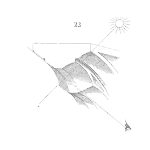
In May 2018, we sponsored a summit that brought electric power reliability leaders from all over the country to Houston to discuss the gap in reliability. I’ve had a few weeks now to reflect on the event, and I want to share those thoughts with you.
If SDMyers was the mother of the Electric Power Reliability Summit (EPRS), then I feel like I was the midwife. [Read more…]
by Ray Harkins Leave a Comment

In this age of infinite information at our fingertips, it seems that fewer people are finding reference books and investing in their own libraries. After all, googling whatever’s on your mind is free and easy. But books, especially reference books and textbooks, still have a necessary place in our information age. [Read more…]
by James Reyes-Picknell Leave a Comment
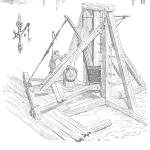
In my book, Uptime, I talk about doing a review or assessment to determine your current state as compared with your vision of some desired future state. This suggests to many that a formal assessment is needed. However, you might also notice that I removed the Appendix containing sample assessment questions. Here’s why… [Read more…]
by Greg Hutchins Leave a Comment

I was shocked to find out about our drug and medical supplies reliance on China, a dangerous risk to the U.S. I believe most Americans were also shocked. I believe this revelation is a game changer and the American people will insist on change. [Read more…]
by Nancy Regan Leave a Comment
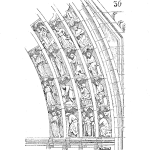
I’m all about realizing the Inherent Reliability of my teeth and I use Condition Based Maintenance (CBM) to do it! Join me for a trip to my dentist’s office where Josie, my dental hygienist, details the Potential Failure Conditions she’s looking for. [Read more…]
by Robert (Bob) J. Latino Leave a Comment

Understanding now what perspective the executives have of an RCA initiative, how should RCA efforts be designed to report their results to the “C” level? Many would like to say “to express the results in a manner that demonstrates an increase in patient safety”. In a perfect world that would be nice, but what single metric expresses an increase in patient safety? Is there a line item on the Income Statement (IS) or Balance Sheet (BS) labeled “patient safety”? Not likely. [Read more…]
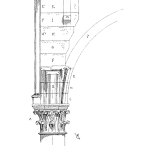
When a product is said to be of “high quality”, it is usually perceived to be reliable. Conversely, if the product is said to be “reliable”, it is probably perceived it to be of high quality. Why is this?
A product is an assembly of many components, all of which must be manufactured to some quality standard. Quality in component manufacturing is achieved through rigor in the manufacturer’s Quality Assurance (QA) system. QA systems define the Quality Control (QC) processes which ensure that materials, components, and assemblies meet the quality standard. The rigor must be appropriate for the product’s application. In critical applications (e.g. for sub-surface safety valves), the rigor must be high. [Read more…]
by Greg Hutchins Leave a Comment

In the past, organizations have pr
acticed agility more than anything else because it is easy to simply pivot and put out small fires as they arise.
But with the world facing a global pandemic, statewide lock downs here in the United States, and a once booming economy now seemingly frozen in time, organizations both large and small are caught in the blaze as those small fires are now an uncontrollable inferno of a great unknown. [Read more…]
by James Reyes-Picknell Leave a Comment

Reliability Centered Maintenance is an analytical process used in decision making about how best to manage equipment and system failures, and their consequences. Much of its output comprises maintenance tasks with assigned task frequencies. Those tasks will ultimately be managed in your Computerized Maintenance Management System (CMMS) or Enterprise Asset Management Systems (EAM). You don’t need software to perform RCM analysis, but it is helpful. Given the link between RCM output tasks and the proactive maintenance program you will manage using your CMMS / EAM, it seems to make sense to link or integrate the two software tools. Integration should enable automatic updates of the PM program stored in your CMMS/EAM whenever the RCM analysis is updated and possibly feed failure event historical data back to your RCM analysis with a notification that perhaps the analysis should be reviewed. Alas, that’s not going to happen. [Read more…]
by Nancy Regan Leave a Comment
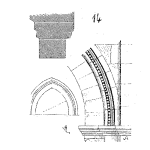
Let’s celebrate the birthday of a very special Maintenance and Reliability event. In July 2018, the MSG-1 document turned 50 years old. Since many of the principles found in MSG-1 are embodied in RCM, that means RCM principles are also 50 years old! Take a trip down memory lane with me and MSG-1…the first of two documents that led us to Reliability Centered Maintenance! [Read more…]
by Fred Schenkelberg Leave a Comment

An immediate purpose is to earn a living. You also may suggest the work is to improve the reliability of the product or system. Reduce downtime, reduce warranty, increase profit, etc.
That is fine for the overall purpose of reliability engineering work, yet in the day to day work, the specific task level, what is the purpose behind what we do?

In the previous Learning From Failure article, we reviewed that chloride stress corrosion cracking (Cl-SCC) of stainless steel readily occurs at temperatures above 140°F (>60°C) when exposed to aqueous (water-based) chlorides. Although the most attention is given to corrosion from product exposure, Cl-SCC can also occur from the external surfaces as a result of corrosion under insulation (CUI). Here is an example. [Read more…]
by Robert (Bob) J. Latino Leave a Comment

If 100 healthcare executives were polled about their definitions of “root cause analysis”, there would be 100 different answers. Here in is the problem, understanding the intent and power of Root Cause Analysis (RCA). For this reason, RCA is viewed as having either limited or phenomenal value to an organization. This article will seek to strip away the labels associated with RCA brands and focus on the processes, their results and how they are communicated (or miscommunicated) to executive management. Effective RCA efforts can fail because of their inability to demonstrate their value to the bottom-line of the organization. [Read more…]